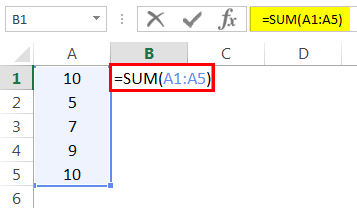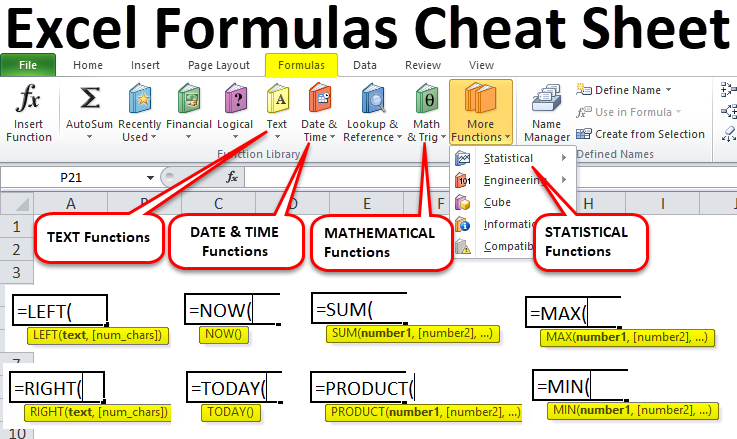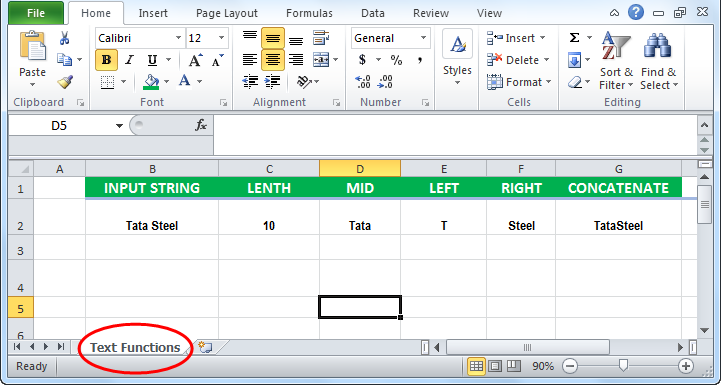

- #List excel formulas and functions how to
- #List excel formulas and functions full
- #List excel formulas and functions Pc
Press the Alt key to access (and view) the shortcut keys (letters highlighted with black boxes) for the tabs on the Ribbon menu. If the data resumes in A17, you must press End-Down to get to that cell. If you press the End key followed by the down arrow, your cursor moves to the last cell (A15), because A16 is an empty cell. Consider this example: Your cursor is at A1, and you have records down to A15 and fields out to column G. The End key moves the cursor to the end of any column or row that contains data before an empty cell. If you press the Enter key, the cursor moves down because entering data vertically (down a column) is much faster than entering data horizontally (across columns). Moving from cell to cellĪfter you enter data into a cell, press one of the arrow keys to accept the data and move the cursor simultaneously (up, down, left, right). We also have some great tips for managing huge spreadsheets.
#List excel formulas and functions full
Nail these basics to speed up your work, and check out Microsoft’s full list of Excel keyboard shortcuts for even more shortcuts. Excel navigation and shortcut keysĮxcel’s navigation and shortcut keys can help you move faster and more precisely around a spreadsheet of any size.
#List excel formulas and functions Pc
PC World / JD SartainĮxcel’s Tell me what you want to do tab lets you type in a search query or natural-language request to help you find the right menu item or further information. Select one of the options from the list that appears, and Excel will provide instructions or take you directly to the correct place in the program. Just click this tab (or press Alt+ Q) and type your question, subject, command, feature, or option. There’s a new tab called Tell me what you want to do at the end of the Ribbon menu. In version 2016, Excel has added a more intuitive way to access the Help information. Excel then returns a submenu list with more detailed options or provides instructions for the original request. Scroll through the options and select (double-click) the one that fits your specific needs. You can type a subject, command, feature, or option in the Search box, and Excel returns a long menu list of related items.

In Excel, the Function key F1 and the white question mark at the top right side of the Ribbon menu offer access the online Help menus. Use Excel’s extensive Help menus to learn about its more complex features. We’ll be covering some of these topics in related articles, but meanwhile, you can use Excel’s heavily revamped Help files to learn about them. The more complex features, like formulas, pivot tables, macros, and custom Visual Basic programming, are the areas where most users need guidance.

Most of these features are user-friendly and so intuitive, you can play around with the options under the tabs on the Ribbon menu, and self-discover how they work and what they do.
#List excel formulas and functions how to
Learning how to use other functions will allow you to solve complex problems with your spreadsheets, and we'll be talking more about them throughout this tutorial.The list of additional features is long: tables, graphics, charts, spell-checker, thesaurus, custom formatting for text and numbers, custom reporting, printing, and so much more. There are many other functions you can use to quickly calculate different things with your data. In this example, the TODAY function will be calculated first, since it's nested within the WORKDAY function. As a rule, the nested function is always calculated first, just like parentheses are performed first in the order of operations. These are known as nested functions, since one function is placed, or nested, within the arguments of another. Here, we have two different functions working together: the WORKDAY function and the TODAY function. Let's take a look at a more complicated example that uses multiple functions:


 0 kommentar(er)
0 kommentar(er)
